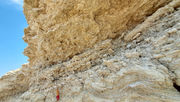Shop Made Shingles
If you have ever been to Cape Cod, you have seen homes with painted siding on the front side and gray cedar shingles on the other three. People in the Pacific Northwest never do this, though I am not sure why. We're just as practical as those cod-eating, flannel-wearing Yankees. We say "Yah sure, ya betcha".
A recent window replacement project left me with ragged ends on old clapboard siding. Turns out, 114 years of Rocky Mountain weather makes cedar brittle!. So, instead of tracking down new siding with a matching profile or mill the stuff myself, I decided to replace it with shingles.
Here's the problem: Traditional cedar shingles are crazy expensive. Like $200/bundle, each of which covers 33 square feet. I needed 300+ square feet. I devised an alternative: Shop made shingles fabricated on the table saw from exterior grade panel siding.
Material
1/2" x 8' x 4' TruWood sheets of pre-primed exterior-grade panels are available at Lowes for $24/sheet. They come in both grooved and flat-faced sheets; I used the flat-faced stuff. Its tan colored on the primed face and has a natural wood grain texture. The grain will be vertical when the milled shingles are installed.
Prime Before Cutting
Priming is much faster if you prime the backs of whole sheets before you begin cutting. I used interior/exterior Kilz primer (~$17).
Breaking Down Sheets The finished dimension of each shingle would be 14" x 5-7/8", so I ripped each sheet into 24" strips, then ripped the sheets into strips 5-7/8" wide. The grain should run parallel to the strip. Cut the strips to 14" lengths on the miter saw (use a stop block) and bevel the top edge of each shingle's front face at ~8 degrees on the table saw (use a tenoning jig). The bevel is about 3" wide and helps the shingles lay flat. Cedar shingles are thin at the top and thicker at the bottom for the same reason. I made several hundred shingles from 7 sheets (~$180). Estimate the number you need by counting up the number of 4x8 sheets it will take to cover the area, then multiply by 3 to accomodate overlap. Installation
Install all window, door, and any corner trim prior to the shingles so it lays flat to the sheathing. The shingles will butt up against it.
Starting at the base of the wall, snap level lines to mark the bottom of each row and a 5-1/2" reveal. Installe a 1/2" wide, 1/2" tall wood strip along the bottom of the first row to get the cant angle that the shingles in rows above will need. This strip need not be one long piece; mill scraps and offcuts to create it. Continue adding successive rows, working from bottom to top.
Nail the shingles through the house wrap and into the OSB using 16-gauge finish nails (1-1/4" nails). I used about 4 boxes (~$75). I put 3-4 nails in each shingle, near the top edge. The nails are hidden by the overlapping row of shingles above. Since the shingles are basically 6" wide, I wanted the reveal to be a little less in order to create more horizontal pattern. I made a simple t-shaped jig from 2" wide 3/4" thick plywood scrap and cut one of the legs to 5-1/2", the amount of the reveal. After each row is complete, I slide the inverted "t" jig along the bottom edges, marking the next reveal line in pencil on their faces. The bottom edge of the next row follows this line. I then check that pencil line with the long level and start nailing again. You don't have much room for error in level lines for each row. Your eye will pick up any misaligned row immediately.
The gap between shingles must remain consistent. Make it wide enough to get a paint brush into, something like 1/4". Shingles are centered over gaps in the previous row. Unlike level lines, the gaps need not be perfect. You'll have to narrower shingles at the sides of each row and customize shingles where you encounter trim and angled roof eaves. Do this by holding the shingle up to the spot and mark the cut lines and waste side clearly. Figure out the soffit/roofline angle and set the chopsaw miter to this angle. Mine was 27.5 degrees. Carry a few shingles in a large tool belt pocket or tethered bucket when working on a ladder - it speeds things up.
Tools 16-gauge pneumatic finish nailer
Compressor & hose
Extension cord
Boxes of nails
T-jig for checking reveal
Pencil
Hammer Nippers (nail pullers)
Step ladder
Chalk line
Estimating You pay about $200/bundle for cedar shingles. A bundle covers no more than 33 square feet. A square is 3 bundles (100 square feet). We spent about $400 in materials for our project. I would have bid it at $1800 without painting. The milling is time consuming (I spent 5 hours) and you need the right tools, but its not a difficult project.
























